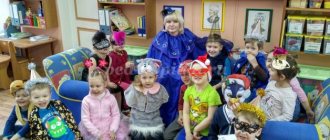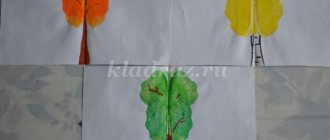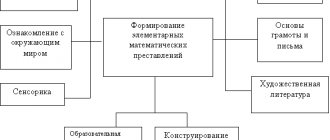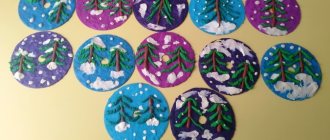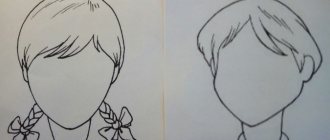Abstract of GCD cognitive development in the middle group “Spring has come”
GCD for cognitive development in the middle group “Spring has come”
Target:
Strengthen children's ideas about spring and its signs.
Tasks:
• Clarify and generalize children’s ideas about the characteristic signs of spring, expand children’s knowledge about spring; • Expand and activate the vocabulary on the topic; • To develop children's ability to work in a team;
Equipment:
illustrations on the theme of spring, a letter with riddles, the game “Seasons”.
Progress of the lesson:
Educator:
Guys, the sun came to our lesson.
What is it like? Children: Cheerful, radiant, yellow, spring Educator:
Let's smile at each other like the sun at us, give each other a good mood.
Guys, the winter lasted a very long time with frosts, strong winds, snow, gray, gloomy skies. We all had to wear warm clothes (warm jackets, fur coats, hats, winter boots, felt boots). But in nature everything goes on as usual, and the harsh winter is replaced by a new season. Now you can try to guess what it’s called. (Take the envelope.) Educator:
Someone threw me at the window, Look at the letter.
Maybe it's a ray of sunshine that tickles my face? Maybe this little sparrow dropped it while flying? Who did the letter come from? You want to know, right? Then you have to try, you can guess the riddles! Educator:
Let's open the envelope and guess the riddles: There is a scarlet ball in the blue sky, It is bright and hot. (Sun.) White carrots grow in winter, And when the sun warms up, bitter tears flow. (Icicle.) The starling's housewarming party. He rejoices endlessly. So that a mockingbird could live with us - We made it... (Birdhouse) In a blue shirt, Runs along the bottom of the ravine. (Stream) Here on a branch is someone’s house, There are no doors in it, no windows, But it’s warm for the chicks to live there, That’s the name of the house... (Nest) There’s crackling and thunder on the river, This means an ice breaker, There’s ice on the river This means ...(Ice drift) The carrot is white, It grew all winter. The sun warmed up - I ate all the carrots (Icicle)
He has a carrot nose, He loves frost very much, He doesn’t freeze in cold weather. And spring comes and melts. (Snowman) He was the first to get out of the mud on the thawed patch. He is not afraid of frost, Even though he is small (Snowdrop) She comes with affection, And with her fairy tale. He waves his magic wand, A snowdrop blooms in the forest (Spring), The snowball melts, The meadow comes to life, The day is coming. When does this happen? (In spring.) Educator:
That's right guys, it's spring.
Look at these illustrations and tell us what is shown on them. What time of year is it in this picture? Children: Winter. Educator:
What do we see on it?
Children: Lots of snow, children sledding, trees covered in snow, children dressed warmly, etc. Educator:
What time of year is shown in the second picture?
Children: Spring. Educator:
In what subjects did you guess that it was spring?
Children: The sun is shining brightly, icicles, streams, thawed patches, birds have arrived, etc. Educator:
Let's give beautiful words to spring.
What's spring like? Children: Warm, beautiful, sunny, fragrant, ringing, bright, green, blooming, noisy. Educator:
Let's play the game
"Wonderful Bag"
.
Look at my bag, there’s something in it! Want to know what's in it? I'll tell you a secret that it contains a lot of small cards with pictures. You will come up to me, take out one picture at a time and name what is drawn on it and what time of year it happens. You need to put winter pictures on the field where winter is depicted, and spring pictures - for spring. (Children take turns coming up, taking a small picture, calling what is drawn on it and relating it to the time of year.) Educator:
After what time of year does spring begin?
Children: Spring comes after winter. Educator:
Guys, are winter and spring similar to each other?
Children: No. Game "Say the opposite".
In winter the snow is white and in spring it is gray, in winter the snow is clean and in spring it is dirty, in winter the days are cold and in spring they are warm, in winter the days are short and in spring they are long, in winter the sun is dim and in spring it is bright, in winter the sky is gray and in spring it is blue, in winter the wind is cold, and in spring it is warm.
Educator:
What month does spring begin?
Children: Spring begins in March. Educator:
How many months does spring have?
Name them. Children: March, April, May, don’t forget them! Educator:
What is the wind like in the spring?
Children: Warm, fresh. Educator:
What is the spring sky like?
Children: Clear, bright, high, clean. Educator:
What other signs of spring do you know?
Children: Birds are returning from warmer climes (Demonstration of paintings with birds). The buds are swelling on the trees. (A willow twig with buds is demonstrated.). The buds burst and green leaves grow. Green grass appears, the first flowers are snowdrops. People dress in light clothes. - And now we will play a game called “Spring Words” .
I will name the words, and you guess what I'm talking about.
